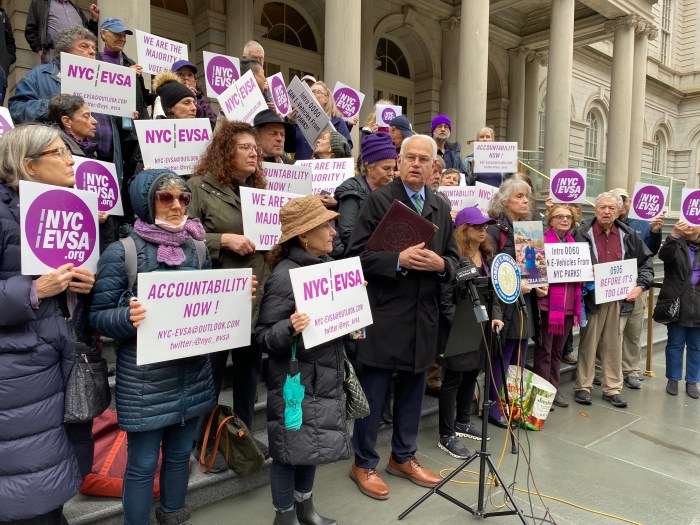
Don’t count on Mayor Bill de Blasio’s upcoming “congestion plan” to cut down on commute times.
While the mayor’s strategy to relieve street congestion is expected to be published in coming weeks, his administration has made it clear that commuters shouldn’t expect the plan to make much of an impact on traffic.
Details of the mayor’s strategy has been scarce so far, with Polly Trottenberg, the Department of Transportation commissioner only saying that it will target commercial delivery hours, parking regulations, and will incorporate data-driven approaches to certain points of gridlock.
“We’re going to be looking at the whole bundle of the things that the city can control and put resources in to try and see what we can do [with] congestion,” she said at a City Council hearing Wednesday.
But when Bronx Councilman James Vacca fumed over slow express bus speeds in his district, Trottenberg said there was little the city alone could do.
“They’re not express buses. They’re non-express buses. They’re stuck in the same traffic as everybody else,” vented Vacca, who feared that poor express bus service would lead to more constituents driving.
Trottenberg, also an MTA board member, touted new bus lanes slated to be striped in Manhattan that will help move express buses along faster. But she stressed that the only way to beat congestion is with more mass transit funding.
“Without major new investments in the subway system, I’m not going to pretend we can be utterly transformative here,” she said, noting the impact the three Second Avenue subway stations have had on congestion.
“We’re seeing big reductions on the Upper East Side,” she added. “One of the big tools for congestion reduction is to continue to build out mass transit capacity.”
This frustrated Vacca, who later said the city needed to bring more immediate plans to address traffic. He thought a reform in the city’s tolling system, like the one proposed by Move New York, could help. The mayor has expressed that his forthcoming plan won’t include such changes, which would need to be legislated by state lawmakers, because of the lack of political will in Albany to do so.
Vacca conceded that point, but noted the benefits of Move New York, which would add tolls to the East River Bridges while reducing outer-borough bridge tolls based on bridge traffic volumes — generally, the busier bridges would get higher tolls.
The idea would also add tolls to certain Manhattan roads into its central business district. Toll revenue collected would be kicked into funding mass transit projects like those Trottenberg advocated for Wednesday.
“Certain bridges in our city do not represent a threat to congestion in Manhattan. So why are we charging such exorbitant tolls on these bridges that are not part of the crisis that we face every day?” Vacca said. “I think the plan represents a good effort to attack the congestion people face Monday through Friday in Manhattan. By also imposing tolls here but reducing tolls elsewhere, I think that brings a solution.”





































